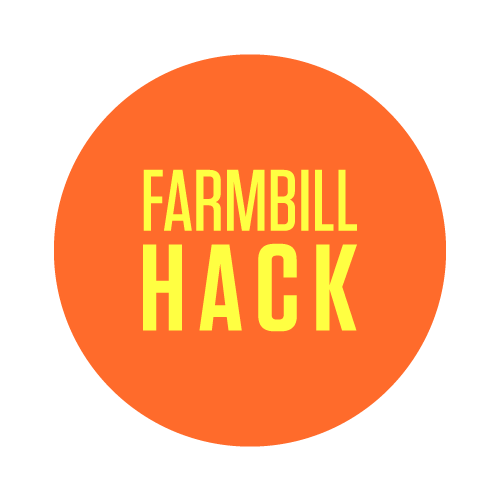 On December 3, 2011, Food+Tech Connect and Gojee will bring together tech designers, journalists, food policy experts and data specialists to “hack” one of the most important pieces of legislation in the U.S. – the Farm Bill.
On December 3, 2011, Food+Tech Connect and Gojee will bring together tech designers, journalists, food policy experts and data specialists to “hack” one of the most important pieces of legislation in the U.S. – the Farm Bill.
Sign up here to participate in the Hackathon, or tune in here to follow live streaming event coverage. Volunteers can sign up to work on specific projects here.
Currently 90 volunteers in NYC, and another 40 virtually, will work on project ideas listed by leading experts at Johns Hopkins, GRACE Communications Foundation, Food & Water Watch, Oxfam America, Glynwood Insitute, and others, to create infographics and visuals to help better explain the Farm Bill to the public.
Sponsored project Ideas
Organizations have posted project ideas on the Farm Bill Hackathon Wiki along with the corresponding data and resources for participants to create visualizations and infographics about the issues. The “problems” listed include:
Corporate Control of the Meat Case – posted by Food & Water Watch
Problem: Under constant pressure to “get big or get out,” many farmers did just that, scaling up to become industrialized livestock operations – otherwise known as factory farms. The best way to rein in these agribusiness giants is to give the USDA clear marching orders to enforce anti-trust laws — and the Farm Bill is the best legislative opportunity to do that.
Solution: “Hackers” will apply available statistics about market share in the livestock sector to a graphic consumers can relate to – the meat case.
Visualization of Government Money to New Farmers – posted by Glywood Institute
Problem: The government’s Startup America Program http://www.sba.gov/startupamericais investing 2 billion dollars into “promising high-growth” businesses. How much is going toward new farmers? What, if any, money or resources go to new farmers from the Farm Bill?
Solution: Create a visualization comparing where startup money is being invested, including how much (or how little) is going to new farmers.
How the Farm Bill Contributes to Poverty and Helps Drive Global Food Insecurity – posted by Oxfam America
Problem: The US Farm Bill purports to help farmers and improve food security, but in reality, it undermines global food security and contributes to a broken food system which keeps almost a billion people hungry. How?
Solution: Create a tool or visualization to help Americans understand the impact of the Farm Bill on global food security and illustrates the issues above.
Consolidation and Farmer Share of the Consumer Food Dollar – posted by Food & Water Watch and The GRACE Communications Foundation
Problem: The four largest companies in each industry slaughter nearly all the beef, process two-thirds of the pork, sell half the groceries and manufacture about half the milk in the United States. This means that the low prices paid to farmers are not passed on to consumers as savings at the grocery store.
Solution: Illustrate the share of the consumer food dollar that reaches farmers and how that share is decreasing over time as agriculture consolidates in the hands of a few. Or create an interactive graphic depicting the ongoing trend toward consolidation and industrialization of US food production.
Connecting Consolidation in Agriculture to Food Miles – posted by Food & Water Watch
Problem: A growing number of consumers are now aware of “food miles” or how far food travels to reach their plates. But not as many realize how many types of food are grown in just one or two regions of the country.
Solution: Use data about the top counties for production in certain foods (like tomatoes, leafy greens, eggs and pork) to estimate how far these foods travel on average to reach major population centers.


